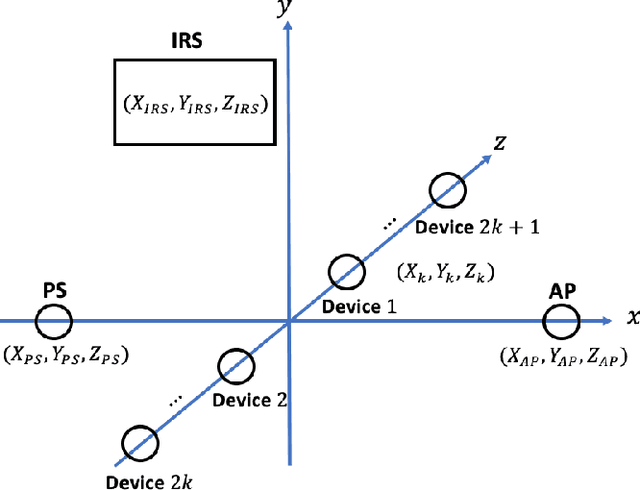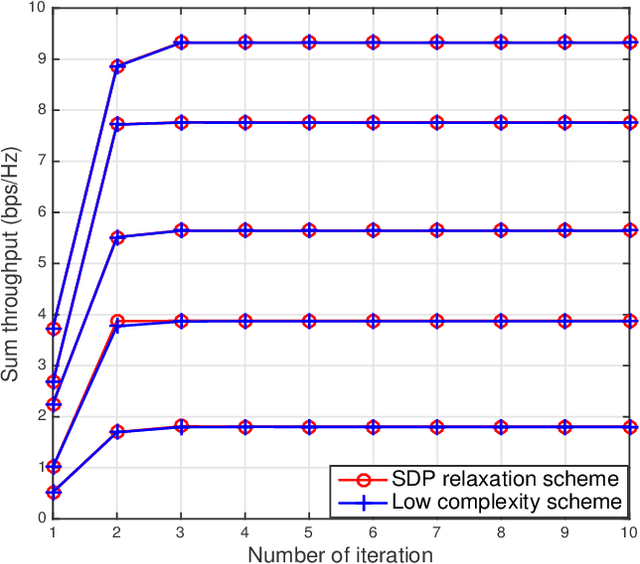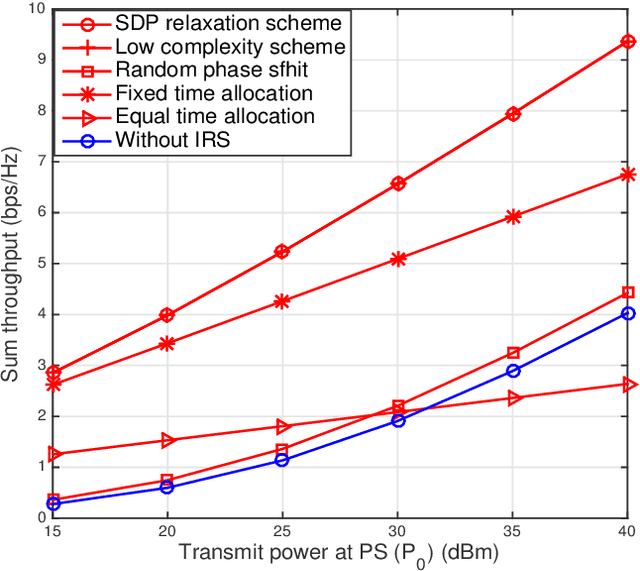Xueqian Fu
A Unified Framework for IRS Enabled Wireless Powered Sensor Networks
Mar 19, 2021



Abstract:This paper unveils the importance of intelligent reflecting surface (IRS) in a wireless powered sensor network (WPSN). Specifically, a multi-antenna power station (PS) employs energy beamforming to provide wireless charging for multiple Internet of Things (IoT) devices, which utilize the harvested energy to deliver their own messages to an access point (AP). Meanwhile, an IRS is deployed to enhance the performances of wireless energy transfer (WET) and wireless information transfer (WIT) by intelligently adjusting the phase shift of each reflecting element. To evaluate the performance of this IRS assisted WPSN, we are interested in maximizing its system sum throughput to jointly optimize the energy beamforming of the PS, the transmission time allocation, as well as the phase shifts of the WET and WIT phases. The formulated problem is not jointly convex due to the multiple coupled variables. To deal with its non-convexity, we first independently find the phase shifts of the WIT phase in closed-form. We further propose an alternating optimization (AO) algorithm to iteratively solve the sum throughput maximization problem. To be specific, a semidefinite programming (SDP) relaxation approach is adopted to design the energy beamforming and the time allocation for given phase shifts of WET phase, which is then optimized for given energy beamforming and time allocation. Moreover, we propose an AO low-complexity scheme to significantly reduce the computational complexity incurred by the SDP relaxation, where the optimal closed-form energy beamforming, time allocation, and phase shifts of the WET phase are derived. Finally, numerical results are demonstrated to validate the effectiveness of the proposed algorithm, and highlight the beneficial role of the IRS in comparison to the benchmark schemes.
 Add to Chrome
Add to Chrome Add to Firefox
Add to Firefox Add to Edge
Add to Edge